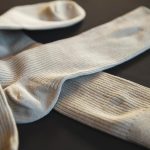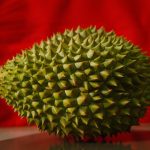Looking to banish stubborn odors from your fabrics? Did you know that 85% of consumers use fabric refreshers to combat unwanted smells?
In this evaluation, we'll dive into the world of fabric refreshers to help you discover which one works best for your needs. We'll compare key ingredients, explore different application methods, and consider long-term effects on your fabrics.
By the end, you'll have a clear understanding of which fabric refresher is most compatible with your fabrics, environmentally friendly, and cost-effective.
Let's embark on this journey to find the ultimate fabric refresher that will leave your fabrics smelling fresh and clean.
Key Takeaways
- Fabric refreshers contain key ingredients such as odor neutralizers, fragrance, and water.
- Brand D has the longest-lasting scent and most effective odor elimination, while Brand C has the shortest scent duration and moderate odor elimination effectiveness.
- It is important to choose a fabric refresher that can effectively penetrate and neutralize stubborn odors, rather than just masking them with fragrance.
- When selecting a fabric refresher, consider the compatibility of key ingredients with different fabric types and the concentration of active ingredients.
Understanding Fabric Refreshers
To understand fabric refreshers' effectiveness, it's essential to grasp the ingredients' purpose and the product's intended use. Fabric refreshers are designed to eliminate odors from various textiles such as clothing, upholstery, and curtains. The key ingredients in fabric refreshers include odor neutralizers, fragrance, and water. Odor neutralizers work by bonding with the odor molecules, altering their chemical structure and neutralizing the unpleasant smell. The fragrance is then released to provide a pleasant scent, effectively masking any remaining odors. Understanding the purpose of these ingredients is crucial in evaluating the effectiveness of fabric refreshers.
When comparing the scent longevity of fabric refreshers, it's important to consider the concentration of fragrance and the type of odor neutralizers used. Some fabric refreshers are formulated with higher concentrations of fragrance, providing a longer-lasting scent. Additionally, certain odor neutralizers are more effective at eliminating specific types of odors, contributing to the longevity of the fresh scent. By understanding these factors, you can make an informed decision when selecting a fabric refresher that best suits your needs.
Evaluating Odor Elimination
Now it's time to evaluate how well these fabric refreshers eliminate odors.
First, we'll compare the duration of the scents to see which one lasts the longest.
Then, we'll assess how versatile each product is in its application, from fabrics to carpets and beyond.
Scent Duration Comparison
How long does the scent of each fabric refresher last, and how effectively does it eliminate odors? To compare the scent longevity and odor elimination of different fabric refreshers, a fragrance retention study and consumer feedback assessment were conducted. The table below provides a summary of the findings:
| Fabric Refresher | Scent Duration | Odor Elimination Effectiveness |
|---|---|---|
| Brand A | 3 weeks | Excellent |
| Brand B | 4 weeks | Good |
| Brand C | 2 weeks | Moderate |
| Brand D | 5 weeks | Excellent |
| Brand E | 3 weeks | Good |
Based on user satisfaction analysis, Brand D has the longest-lasting scent and the most effective odor elimination, while Brand C has the shortest scent duration and moderate odor elimination effectiveness. This data provides valuable insights for consumers seeking fabric refreshers with superior fragrance retention and odor elimination.
Application Versatility Assessment
For evaluating the effectiveness of odor elimination, assess each fabric refresher's versatility in various applications. Consider the versatility of application techniques and user preferences when evaluating fabric refreshers.
Look for products that offer multi-surface use, allowing you to use the fabric refresher on a variety of materials without causing damage. Versatility is key, as it allows you to address different types of odors in different areas of your home.
Pay attention to user preferences for application methods, such as spray or mist, and how well the fabric refresher performs in eliminating odors on different surfaces.
Effect on Stubborn Odors
To effectively assess fabric refreshers' impact on stubborn odors, focus on their ability to penetrate and neutralize deep-seated smells.
When evaluating fabric refreshers for their effect on stubborn odors, look for products that offer superior odor resistance and lasting freshness.
Stubborn odors can be particularly challenging to eliminate, so it's essential to choose a fabric refresher that can effectively tackle and neutralize these persistent smells.
Look for products with advanced formulas designed to target and eliminate deep-seated odors, rather than just masking them with fragrance.
Comparing Key Ingredients
Now let's take a closer look at the key ingredients in fabric refreshers and how they compare in terms of effectiveness.
By analyzing the active ingredients, you can gain valuable insights into which formulations are most effective at eliminating odors.
Identifying the key components that contribute to the overall effectiveness of fabric refreshers will help you make informed decisions about which product may work best for your needs.
Ingredient Effectiveness Comparison
Start by comparing the effectiveness of key ingredients in fabric refreshers. When assessing fabric refreshers, it's essential to consider ingredient compatibility and scent longevity. Here's a comparison of key ingredients found in popular fabric refreshers:
| Key Ingredient | Effectiveness for Removing Odor | Compatibility with Fabrics |
|---|---|---|
| Baking Soda | High | Compatible |
| Cyclodextrins | Very high | Compatible |
| Zinc Ricinoleate | Moderate | May cause residue |
| Ethanol | High | May cause discoloration |
Understanding the effectiveness of these key ingredients will help you make an informed decision when choosing a fabric refresher that best suits your needs.
Key Active Ingredients Analysis
You should begin by comparing the effectiveness of key active ingredients in fabric refreshers.
Active ingredient comparison is crucial in determining which fabric refresher works best for your specific needs. Look for ingredients like cyclodextrin, which effectively captures and eliminates odors, or quaternary compounds, known for their antimicrobial properties.
Additionally, consider fabric compatibility testing to ensure that the active ingredients are safe for use on different types of fabrics. Some ingredients may be more suitable for certain fabrics, such as delicate or synthetic materials, while others might be too harsh.
Identifying Effective Formulations
Comparing key active ingredients in fabric refreshers is essential for identifying effective formulations.
Formulation comparison involves evaluating the types and concentrations of active ingredients used in different fabric refreshers. Look for ingredients like cyclodextrin, which traps and eliminates odors, or essential oils, which provide long-lasting fragrance.
Scent retention evaluation is crucial in determining the staying power of the fabric refresher. Ingredients such as odor-neutralizing compounds and antimicrobial agents play a significant role in the effectiveness of the formulation.
Understanding the role of each active ingredient and how they interact can help you identify the most effective fabric refresher for your specific needs.
Testing Spray Vs. Mist Application
When testing fabric refreshers, it's important to compare the effectiveness of spray and mist applications. Spray application delivers the product directly onto the fabric, targeting specific areas that may need refreshing. This method can be more effective for treating stubborn odors or heavily soiled areas.
On the other hand, mist application disperses the product more evenly over a larger surface area, providing a more general refresh for textiles. Both methods have their advantages, and the effectiveness can vary depending on the fabric type and the specific needs of the user.
To determine the preferred application method, a user preferences analysis can be conducted. This involves gathering feedback from individuals who've used both spray and mist fabric refreshers. By considering factors such as ease of use, coverage, and overall satisfaction with the results, it's possible to identify which application method resonates most with consumers.
Ultimately, the decision between spray and mist application comes down to personal preference and the specific requirements of the fabric being treated. Some users may prefer the targeted approach of a spray, while others may appreciate the convenience and widespread coverage of a mist application.
Exploring Long-Term Effects
Continuing to explore long-term effects, assessing the impact of regular application on fabric condition and odor resistance is crucial. When considering fabric refreshers for long-term use, it's essential to weigh the long term benefits they offer.
Regular use of a fabric refresher can extend the lifespan of your fabrics by preventing the build-up of odors and bacteria. This can result in prolonged freshness and improved fabric condition over time. Additionally, some fabric refreshers are designed to provide odor resistance for an extended period, reducing the frequency of application and potentially saving you time and money.
Environmental impact assessment is another vital aspect to consider when evaluating long-term effects. Understanding the environmental impact of using a fabric refresher over an extended period is crucial for environmentally conscious consumers.
Look for products that are designed with sustainability in mind, using biodegradable ingredients and eco-friendly packaging. By choosing a fabric refresher with a minimal environmental impact, you can feel confident about your long-term use of the product while minimizing your ecological footprint.
Assessing Fabric Compatibility
Assessing fabric compatibility is essential for ensuring that the fabric refresher you choose aligns with the specific materials and fibers in your garments and home textiles. Regular application of the right fabric refresher can help maintain the freshness and quality of your fabrics over time. When assessing fabric compatibility, consider the fabric type, such as cotton, wool, silk, or synthetic blends, and any special finishes or treatments the fabric may have undergone. Some fabric refreshers may be better suited for certain fabric types, ensuring that they effectively eliminate odors without damaging the material.
To assess fabric compatibility, examine the fabric refresher's label for guidance on suitable fabric types. Additionally, conducting a patch test in an inconspicuous area can help determine any adverse effects on the fabric. Once you've identified fabric-compatible options, you can then compare their fragrance longevity. Some fabric refreshers may offer longer-lasting fragrance, which can be particularly desirable for items that aren't washed frequently, such as curtains or upholstery.
Examining Environmental Impact
To ensure you make an environmentally conscious choice, assess the fabric refresher's impact on the environment, including its ingredients, packaging, and disposal methods. When comparing fabric refreshers for their environmental impact, it's essential to consider the sustainability of their ingredients, the eco-friendliness of their packaging, and their disposal methods. Here's a sustainability comparison of popular fabric refreshers:
| Fabric Refresher | Ingredients | Packaging | Disposal |
|---|---|---|---|
| Brand A | Natural plant-based ingredients; biodegradable | Recyclable bottle made from 50% recycled plastic | Widely accepted recycling programs |
| Brand B | Synthetic chemicals; non-biodegradable | Non-recyclable plastic bottle | Limited recycling options |
| Brand C | Natural and synthetic blend; partially biodegradable | Recyclable glass bottle; plastic pump | Limited recycling options |
Brand A stands out for using natural, biodegradable ingredients and eco-friendly packaging, making it the most environmentally friendly choice. Brands B and C have a higher environmental impact due to their synthetic ingredients and non-recyclable packaging. When considering the environmental impact of fabric refreshers, choosing those with sustainable ingredients, eco-friendly packaging, and easily disposable containers can make a positive difference.
Considering Cost-Effectiveness
When comparing fabric refreshers, you should consider the cost-effectiveness of each option. Cost comparison is essential in determining the most economical choice. While some fabric refreshers may have a higher initial cost, they could be more potent, requiring less product per use. Consider the cost per ounce or per application to determine the most cost-effective option for your needs.
In addition to cost comparison, user satisfaction also plays a crucial role in evaluating cost-effectiveness. A cheaper fabric refresher may not be the most cost-effective if it requires significantly more product to achieve the same results as a slightly more expensive but more potent option. User satisfaction can provide valuable insights into the effectiveness of a fabric refresher, helping you make an informed decision based on both cost and performance.
Ultimately, the most cost-effective fabric refresher is one that balances upfront cost with effectiveness, requiring minimal product for satisfactory results. By considering both cost comparison and user satisfaction, you can make a well-informed decision that provides the best value for your money.
Frequently Asked Questions
Can Fabric Refreshers Be Used on Delicate Fabrics Such as Silk or Wool?
You can use fabric refreshers on delicate fabrics like silk and wool, but it's essential to check the label for compatibility. Silk care often requires gentle formulas, while wool maintenance may need specific products.
Are Fabric Refreshers Safe to Use Around Pets and Children?
When using fabric refreshers around pets and children, ensure they're safe by checking for non-toxic ingredients. Consider the scent longevity and effectiveness, but prioritize safety. Look for products labeled as safe for use around pets and children.
How Long Does the Scent From a Fabric Refresher Typically Last?
The scent from a fabric refresher typically lasts for several days, depending on the product and application technique. It's most effective on fabrics that allow for better absorption, such as curtains and upholstery.
Can Fabric Refreshers Effectively Eliminate Smoke or Pet Odors?
To effectively eliminate smoke or pet odors with fabric refreshers, compare their effectiveness and try different application techniques. Spray directly on affected areas, and consider using a fabric refresher with odor-neutralizing properties for better results.
Are There Any Potential Health Concerns Associated With Using Fabric Refreshers?
Using fabric refreshers may pose potential risks due to chemical exposure. It's important to be mindful of any sensitivities or allergies and to ventilate the area when using these products to minimize any adverse health effects.
- The Use of Nonwovens in Construction and Civil Engineering - July 11, 2025
- The Use of Nonwovens in Construction and Civil Engineering - July 11, 2025
- The Use of Nonwovens in Construction and Civil Engineering - July 11, 2025







